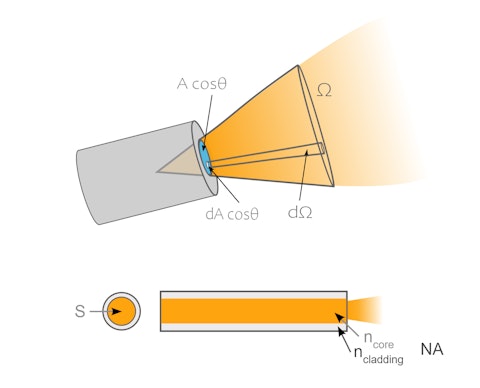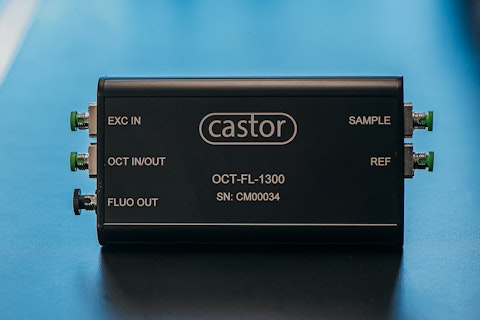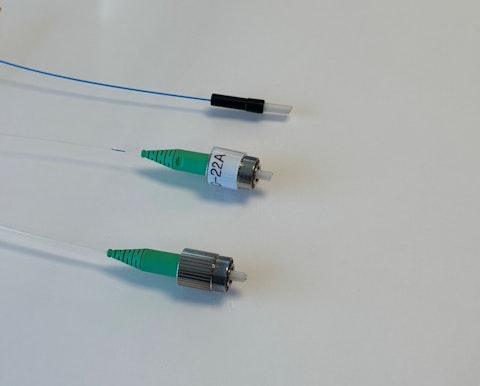What is Optical Étendue?
Optical étendue, also known as throughput or optical extent, characterizes the spatial and angular aspects of light propagation in optical systems. It quantifies how “spread out” light is at the entrance or the exit of a given system. Mathematically, the étendue of a source/detector is defined as the product of the source/illuminated area and the solid angle from which the light is emitted/collected. It is expressed in units of area times solid angle (steradians).
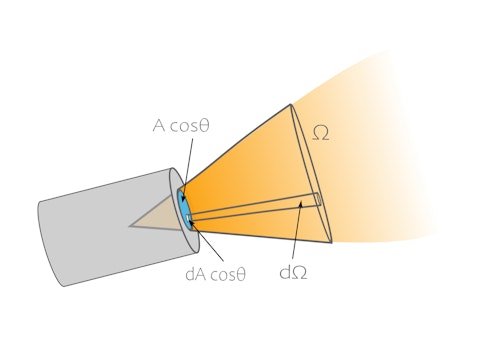
A Mathematical Perspective
The basics
Different quantities describing light propagation are used in the literature. Intensity refers to the power delivered per unit area, whereas radiance (L) quantifies the intensity per unit solid angle. It is defined as
L = (d2φ)/(dA cosθ dΩ),
where d2φ is an infinitesimal element of power, dA cosθ is the projected differential area, and dΩ is the differential solid angle. The total power (Φ) emitted by a source is then expressed as
Φ = ∫ ∫L(r,n) dA cosθ dΩ,
with n being the refractive index. Assuming a Lambertian source (i.e. L(r,n) = L0 such that radiance is independent from the angle), the power becomes
Φ = L0 ∫ ∫dA cosθ dΩ = L0/n02
G.
A new quantity has been introduced: étendue, corresponding to
G = n02 ∫ ∫ dA cosθ dΩ.
Conservation of Étendue
Why it Matters
In an optical system with multiple components, the system’s étendue will be limited by the component with the smallest étendue. Efficient light coupling from a source to an optical fiber, or from an optical fiber to another, requires a good understanding of both components’ étendue.
This concept was first applied in optical fiber couplers by Madore et al. to describe multimode light transfer in Double-Clad Fiber Couplers (DCFC). Using fibers with differing étendues enables control over the coupling ratio, favoring transmission from the fiber with smaller étendue towards the one with a larger étendue. This asymmetrical étendue principle is central to our Wideband Multimode Circulators (WMCs) — a solution designed for efficient management of multimode light.
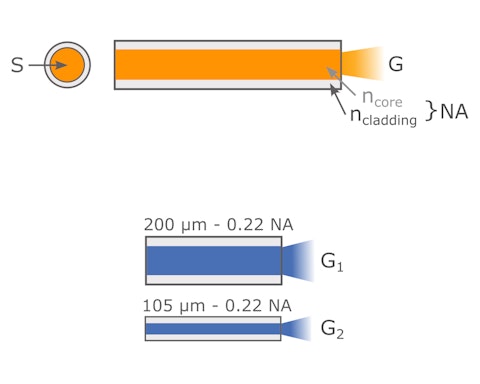
In Optical Fibers
From Principle to Practice
In optical fibers specifically, étendue is expressed as :
G = n S (NA)2,
where n is the refractive index of the fiber core and S is the cross-sectional area of the core. The numerical aperture (NA) of the fiber describes how light spreads out. It is given by
NA = √(ncore2-ncladding2).
The coupling efficiency between two multimode fiber optic connectors can be estimated by the ratio of their étendues (not considering additional losses due to misalignment, back-reflection, etc.).
For example, coupling light from a multimode fiber with 200 um core, 0.22 NA to a 105 um core, 0.22 NA using a mating sleeve would correspond to an efficiency of about
(π(105/2)2 * 0.222) / (π(200/2)2 * 0.222) = 28 %.
In Wideband Multimode Circulators
In the case of fiber optic couplers, such as Castor’s Wideband Multimode Circulators (WMC), the conservation principle allows us to calculate the theoretical light transfer ratio between two fibers. In a WMC, two fibers of different core sizes and/or NAs are fused. This asymmetry is what enables the circulator to direct light with minimal loss and act as a circulator without active optics.
The resulting structure is a three-port device with a fiber with a small étendue at Port 1, and a fiber with a larger étendue at Ports 2 and 3. To estimate the maximum transfer efficiency from Port 1 to Port 2, neglecting excess loss, the following ratio can be used
T1→2 = G2/(G1+G2)
where G1 and G2 are the étendues of fibers #1 and #2, respectively.
For example, if all Ports had identical core diameters of 105 µm and NAs of 0.15, their étendues would be equal, and the device would act as a 50/50 splitter. In the case of a WMC2, pairing a 105 µm, NA 0.15 fiber on Port 1 with a 200 µm, NA 0.22 fiber on Ports 2 and 3 results in a transfer efficiency of ~80%.

Understanding how étendue behaves in optical systems enables the accurate prediction of light transfer, which is crucial for designing effective optical components. This principle underpins the operation of Castor Optics’ WMCs and DCFCs, where controlling bidirectional light flow relies on proper management of étendue.
To learn more about how Castor Optics' innovative fiber optics technology can enable faster, farther, and brighter sensing, contact our team at sales@castoroptics.com.
Written by Marianne Lapierre, Physicist and
Audrey Laurence, Application Scientist
